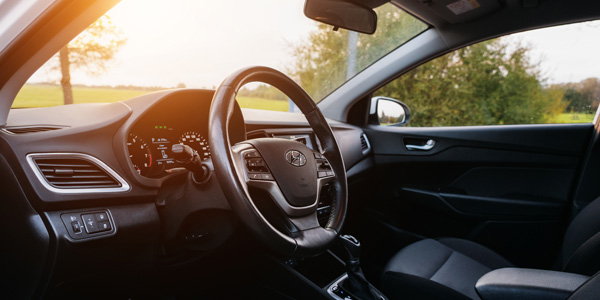
When I first started in this industry, I worked for a major parts retailer. Our stock orders were packed in totes, the contents sorted by aisle and shelf location. This is an efficient and organized method of quickly restocking standardized plan-o-grams, but it has one slight drawback.
Have you ever smelled a tote completely filled with dozens of different air fresheners? Imagine your grandmother sitting in a pine tree, wearing a leather jacket and sipping a piña colada from a coconut filled with black ice. That’s still my primary memory of stock days, more than 20 years later!
But seriously, air fresheners, cleaners, waxes, polishes and protectants are a significant portion of our appearance-product sales. A recent report by Grand View Research projects that the global market for appearance chemicals will be worth nearly $1.6 billion by 2025. That’s billion with a “B.” It’s a market that we cannot afford to overlook, but these products are often very specific in their uses and applications.
Products designed to protect and restore the original look and luster of a new vehicle come in many categories. Cleaners are the most basic of our car-care needs. For the interior, carpet and upholstery cleaners release and remove stains from cloth and synthetic fabrics, but leather requires a dedicated group of cleaning and conditioning products. Using these cleaners and conditioners prevents the leather from drying out and potentially cracking or splitting. Vinyl and hard plastic surfaces are easily cleaned and protected with a variety of products, but silicone-based products should be avoided whenever it comes to seats, pedals and the steering wheel.
For the exterior, waxes restore the shine and offer an additional layer of protection to painted surfaces. In paste or liquid form, these products also may include very fine abrasives to help remove contaminants and minor swirl marks or scratches. In between waxings, specialized products can be used for quickly detailing and touching up problem areas. Lens polish is a popular way to restore clarity to headlights and taillights. Not only does this improve the overall look of the vehicle, but it can be marketed as a safety and vision product. Metal polishes offer a way to restore the shine to chrome and other trim pieces, while wheel products are designed to safely remove brake-dust buildup from chrome, alloy or coated wheels without damaging these finishes.
Rubber cleaners and protectants come in a variety of formulas to restore the deep black shine of tires and other components, or to give them a slick, wet look. Similar products specialize in restoring the textured black plastic found on fender flares, bumpers and other trim.
To please the nose, several products are marketed to eliminate or mask odors. Pre-owned vehicles may have a lingering smell of cigarette smoke or pet odor left behind after resale. Enzymatic cleaners and deodorizers actually break down the molecules of biological contaminants, and are especially effective against “natural” stains and smells. Condensation and water leaks can lead to musty, moldy odors from the carpet, upholstery or from the HVAC vents, and there are many products designed to combat these specific issues too. When all else fails, though, a cluster of 20 or so cardboard air fresheners hanging from the rear-view mirror will mask a lot of odors, but it’s also likely to earn you a ticket, which pretty well stinks too!
Our mechanical customers often have strong brand preferences when it comes to hard parts, but appearance chemicals can take brand loyalty to an entirely new level. Retailers devote considerable shelf space to these products, catering to the varied needs of a wide cross-section of buyers. These products also enjoy a great deal of advertising support, through television programming geared toward the auto enthusiast. In this age of on-demand TV and DVR, product placement and sponsorships within the show have become even more important to the marketing of these products. Up to 86% of viewers skip commercials when watching recorded TV, but products featured within these shows enjoy great brand recognition. Having a varied stock of popular branded appearance chemicals and knowing the appropriate use and application techniques of each one you stock will help you keep your share of this growing market.












